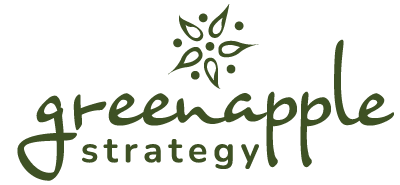Finding the right marketing agency partner is a lot like choosing the perfect sherpa to guide you through the Himalayas. Both journeys require a guide with deep knowledge, extensive experience, and the ability to understand your unique capabilities. A great agency is more than just a service provider; they’re a trusted collaborator who understands your business and helps you reach your summit.
At Green Apple, we view our role similarly, aiming to become an extension of our clients’ teams and thinking through how marketing impacts every facet of their business. But we also recognize that finding the perfect match isn’t always easy. That’s why we’ve compiled these insights to help you find the right marketing partner for your journey.
1. Define Your Everest: Identify Your Needs and Goals
Before embarking on your search for a marketing sherpa, ensure your team is united in purpose. What challenges are you facing? Are you struggling to generate leads, create compelling content, or boost brand awareness? Clearly define your objectives and needs. Do you aim for increased revenue, higher website traffic, or improved brand reputation? Finally, understanding your marketing budget is crucial. It’s like packing the right gear for your hike—essential for your journey’s success.
Action Step: Conduct a team meeting with key stakeholders to discuss and document your marketing goals, pain points, and budget.
2. Research Your Sherpa Options: Create a Shortlist of Potential Partners
Your search for the perfect agency is like scouting the best partner to guide you on the trail. It’s important to consider the agency’s experience and approach. Some agencies specialize in specific areas like branding, digital marketing, or public relations, while full-service firms like Green Apple, taking a more holistic approach, offering all these services and more. Identify which type aligns best with your needs. Reading reviews and case studies will also give you a sense of the agency’s reputation and client satisfaction.
Action Step: Create a list of criteria based on your goals and start evaluating agencies against these benchmarks.
3. Get Personal: Conduct In-Person Interviews
Meeting face-to-face with a potential agency is like a pre-hike meet-up. It will give you a better sense of the agency’s style and culture, much like a hiker meeting their guide before the trek. Can they understand your business and craft a tailored plan? Do they use a data-driven approach to inform their strategies and measure success? Are they a good fit that meshes with the stakeholders and departments they’ll be supporting? All of these are questions to consider as you get to know potential partners.
Action Step: Prepare a list of questions and conversation topics that help uncover intangible factors such as the agency’s willingness to admit mistakes, their communication style, and their approach to collaboration.
4. Build a Strong Partnership
A successful partnership is the key to a well-planned expedition. Clear expectations are helpful in creating an itinerary. Open communication and collaboration are essential, so tools like Basecamp, Monday, or Asana can provide a centralized tool to connect, share updates, and provide feedback. When you take time to develop trust and collaboration, you’ll be more equipped to weather the storms, overcome challenges, and reach your summit.
Action Step: Look for an agency that understands the value of partnership and can grow with your business. If possible, ask for references and recommendations from clients who work in similar industries or areas.
Take the Next Step with Green Apple Strategy
Finding the right marketing agency partner is a critical decision that can significantly impact your business’s success. By following these tips and taking the time to find the perfect match, you’ll be well-equipped to conquer your marketing challenges.
If you’re looking for a marketing agency that approaches work with the mindset of a trusted sherpa, we’d love to connect. Learn more about our approach at Green Apple Strategy or contact our team for an informal conversation about your needs.


